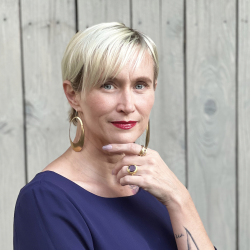
First projects remind me of hiking a new trail. At first I stumble, get frustrated, and usually curse the Pacific Northwest rain and ensuing soggy terrain. When I return to the trail a second time, my familiarity and confidence is much improved (even if the weather isn’t). Soon enough, it becomes second nature. Similarly, as a PBL 101 workshop facilitator and former teacher, I know from experience that first projects are rarely the things of beauty we’d hoped—and that’s ok!
At the workshop I always ask teachers to please email how their first projects go. They leave, eager to try this new practice that will engage their students in authentic and meaningful ways, then all goes quiet. I don’t have to guess at the silence. But like navigating a new trail, first projects serve a purpose. They give us important information about our students and what they need to succeed, so we’re more agile, more adept, the next time we encounter challenges.
When I return to these same teachers for PBL 201 or Sustained Support Visits, I see a pattern of challenges I’ll call first-project “stumbling stones.” What are these stumbling stones and how can we right ourselves to stay on course?
Stumbling Stone #1: “My students were not ready for the content and skills I set out to teach and assess in the project.”
Your first thought may be to frontload your next project with the necessary content and skills. But from the launch to the last day of reflection and celebration, we want to teach as much as possible through the project—the project is the learning. Instead, consider building in assessments and low-stake opportunities to gauge their readiness before project work even begins.
With this data, you can adjust your plan and also find new ways to integrate the 4 Equity Levers. Assessments deepen your Knowledge of Students so you can incorporate their unique connections and interests. They accurately gauge student readiness and the support they need to face Cognitive Demands. You will understand their level of Literacy and find ways to encourage their Shared Power to co-create aspects of the project.
We can use the 9th--10th grade geometry project Game Time from the PBLWorks Project Library as an example. This project requires informational writing with extended definitions and concrete details to produce a manual for a video game they create. Here’s a timeline of “stealth assessments” you can give a week prior to the launch. Just 5–10 minutes at the end of class can prepare both students and yourself for success!
- Monday: Set your cell phone (or other familiar object) on the desk or overhead and ask students to write a definition and describe it to a partner.
- Tuesday: Display a diary or notebook and ask students to write a sequence of how the object was made.
- Wednesday: Display a soccer ball and have students practice, in pairs, explaining from a bank of mathematical vocabulary how the object is used.
- Thursday: Give a three-question geometry pre-assessment and invite students to quickly share which “object of the day” they connected to and why.
With this data, you can return to the project plan with a clearer picture of what students need for success. You will gain an understanding of the lessons, resources, scaffolds, and support they need to reach project learning targets—without spoiling the excitement of the Entry Event.
Stumbling Stone #2: “My students were not as excited about the project as I anticipated. I thought PBL was supposed to engage all students.”
I have good news and I have bad news. The bad news? Engaging all 35–150 students in each phase of a project we design is not terribly realistic. Now for the good news: If the project launch and driving question doesn’t draw all students in, we get a second chance with the authentic public product. If the topic and product doesn’t thrill all students, then we get a third chance with the involvement of a community partner/expert who reflects students’ identities and/or aspirations. If there are still students who are not dancing in their seats, we have yet another chance through collaboration with peers, when they get to use their unique assets (art, music, oral communication, design) to enrich the project. There are so many access points in a project. If one route doesn’t attract a student, another most likely will.
That said, sometimes it takes a few projects to land on the one that is compelling for a hard-to-reach student. Be patient, and know also that apathy can be an outward expression of fear. Rather than sharing what they do not yet understand, students might resort to shoulder shrugs, feigned confusion, missing work (or school), defiance, or outbursts to deflect from feelings of vulnerability, inadequacy, or mistrust. This is where the teaching practice Engage & Coach is so important, as well as the Knowledge of Students equity lever, through which we know how to validate their unique self. Acknowledge this as a new endeavor, emphasize you are in it together at every step, and model vulnerability. You will help students feel secure and ready to engage in the work.
Stumbling Stone #3: “I couldn’t get my students to revise their work. They thought their first draft was good enough.”
Revision resistance is real, yet we know that helping students learn the skills of giving, receiving, and incorporating feedback is key to project success. That is why critique and revision should be infused from the beginning of the school year to the end. It takes students substantial time to learn and value these skills. Here is where we can use the Dimmer Switch approach, where certain Gold Standard Design Elements get “brightened” even when a project is not going on in a classroom.
A ninth-grade class I once taught was contentious on a good day and hostile on many. The whole year we worked on scaffolding and modeling what kind, specific, and helpful feedback looks and sounds like. For six months we practiced the sentence prompt, “I like…” Students then looked each other in the eye and said a positive word to one another. We then could move on to critical feedback using the prompt “I wonder…” for the final three months of school.
I hope you don’t have this extreme of an experience, but it is important to acknowledge that the process of building the skills of critique and revision is slow and methodical. You might begin with whole-class modeling. You can practice accountability in feedback using a digital gallery walk (or sticky notes with their names on it for younger learners). Then you can advance to a fishbowl discussion with fewer students, practicing verbal feedback. And lastly to trios using a Charrette or similar structured protocol. Remember, to support growth, we must hold students to high Cognitive Demand by scaffolding difficult skills so all students can triumph.
Giving feedback is the first skill, but it is only beneficial if the feedback is incorporated into students’ work. Students are well aware we have a lot to teach in a finite amount of time. They’ve gotten good at doing exactly what is expected of them—not one bit more. So when we ask them to do multiple drafts of a final product, or even show their work to an outside audience, there is certainly an adjustment period. To acclimate to this new way of producing work, students first must answer, “What does ‘high quality’ look like in this project?”
To reach this standard, we should ensure the tools students use to self-assess and give peer feedback are qualitative. Qualitative feedback shows, in descriptive language, how to improve the quality of work in service of a high-quality end product. How can you see to this? Discuss with your students, using exemplars, your shared understanding of what the end product will demonstrate. Break the revision process down into manageable steps woven throughout the project path. And arguably most importantly, exemplify the value you place on the revision process, even if you are only able to build in one revision cycle to your project. There should be an expectation that all students can improve upon their first attempt and will improve in their second attempt and onward.
Stumbling Stone #4: “I went way over the time I had allotted for this project.”
In PBL 101 workshops, I share one of our nice and neat sample project calendars up on the big screen. After enticing teachers to peruse more in our Project Library, then comes the warning: While the planned project calendar may be beautiful and tidy, the working calendar looks more like the cafeteria after Halloween. Essentially, it’s a hot mess, and none more so than a first project calendar. But that mess simply reflects the formative data you are receiving as you facilitate the project.
While your pre-project stealth assessments do give you a solid account of the time needed, as you scaffold for all learners, as you adjust the plan to accommodate the students you are working with, things may get cluttered. But that fullness—lessons carrying over an additional day, last-minute expert visits, needing an extra revision cycle before a presentation—represents your responsiveness to students’ learning needs.
Now that I’ve spilled the project calendar secret (messy is good), I’m obligated to inform you that all projects must come to an end. Maybe it is a skill unique to the human teenager, but my students were masters of manipulating me into extending project work time. They were so skilled at it that sometimes I’d look at that initial project calendar longingly, wondering where the weeks went and if we were ever going to finish that final product.
At some point in my teaching career (later than I’d like to admit), I got wise. I figured out that these work time extensions were not due to an under-taught skill or concept and I put a stop to them. I did this by structuring work time using the Workshop Model or station rotations and using tools like learning logs, checklists aligned to the rubric, and Kanban boards. I upped the stakes of the end product by holding students accountable, not just to their peers and myself, but to an expert, client, or other community partner who was waiting on what they had to share. I made a class timeline that we all contributed to, and we stuck to it closely. We kept the project moving and could clearly identify when it was time to wrap up, reflect, and celebrate.
If you still have concerns about the length of the project, check out my colleague Chris Fancher’s blog, “How long should my PBL unit be?” As you reflect, weigh the knowledge and skills gained against the time it took. Was it worth it? What would/do your students say? Identify the pain points in the project that really slowed it down and figure out the root causes to alleviate those next time. You can then decide to reduce the scope of the project, revise the content and skills focus, or try another project that addresses different standards and skills.
Now, back to that rainy Pacific Northwest hiking trail. I thought about that route for days, just as I would a project upon completion. But we must let go of illusions of project grandeur early on. I instead would think about my students’ “aha” moments, basking in their pride in producing high-quality work. It gave me momentum. Remember—even when we stumble, we’re moving forward. As you initiate your first few projects, share your forward momentum with us on Facebook, Instagram, and Twitter.

